Seo Optimized Content - How to beat the Algorithm!
April 29, 2025

SEO Optimized Content - What is it?
Introduction to SEO Optimized Content
At the very beginning, before getting in to what SEO Optimized content is, we first need to break down those two terms: SEO & Content.
What is SEO?
Well this is a very large topic and one for another post (which I will write, I promise), but SEO is an acronym for Search Engine Optimization.
What does that mean?
Let's break it down.
What is a Search Engine?
A Search Engine is any service that allows you to search through all of the information on internet to return answers to your questions.
The obvious giant in this arena is Google, but there is also Yahoo, Bing, DuckDuckGo and the list goes on.
Search Engines have come and gone, but here are the big players at the moment:
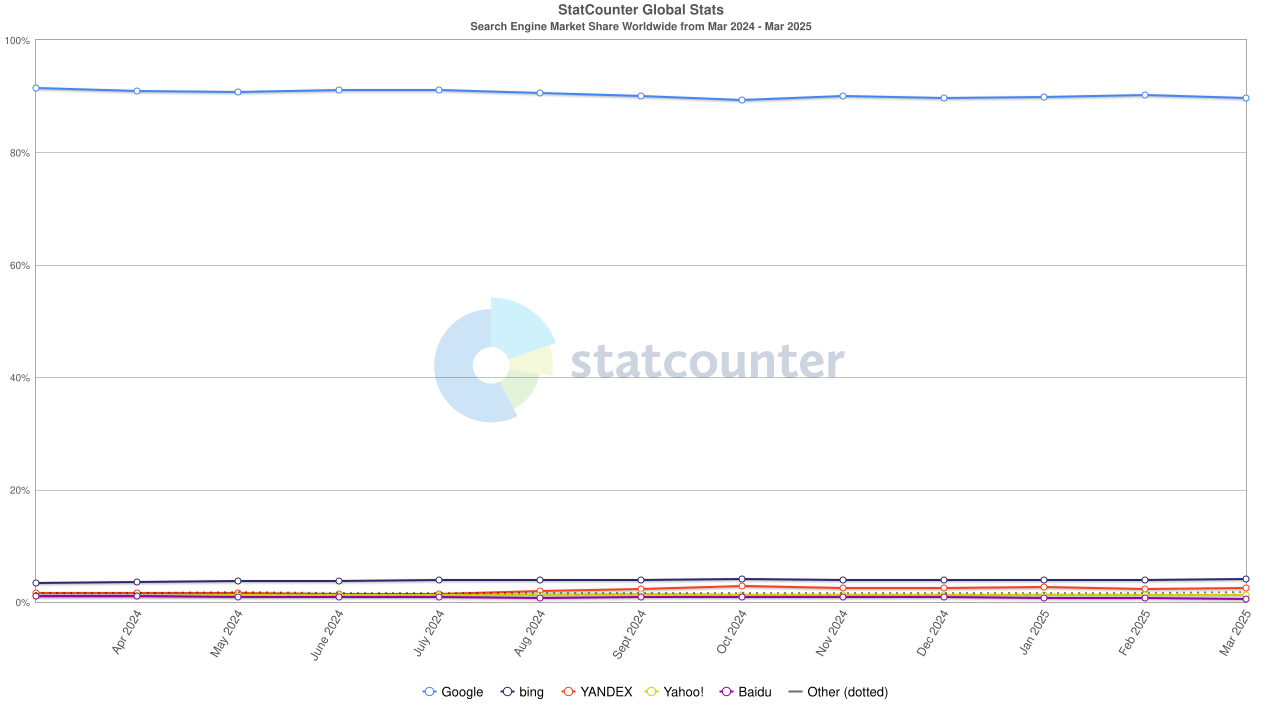
The more observant among you will notice the chasm of a gap between Google (at around 92% market share) and the next largest search engine (or decision engine if you listen to Microsoft), Bing (at around 4%).
| Search Engine | Market Share |
|---|---|
| 89.74% | |
| Bing | 4% |
| Yandex | 2.49% |
| Yahoo | 1.33% |
| DuckDuckGo | 0.79% |
| Baidu | 0.62% |
As you can see, Google dominates the world of Search Engines, with roughly 16.4 Billion Searches a day (as of March 2025), so you'd be forgiven for assuming that when creating Search Engine Optimized Content, you are focusing entirely on pleasing the might Google. To some extent, this is true. Google will be able to drive orders of magnitude more traffic than the next highest player (Bing), so when most people talk about SEO, they mean pleasing the Google Algorithm.
What is SEO Content?
First, let's define "Content":
Content is anything that you can place on your website: Text, Images, Videos, Graphs, Charts etc.
Content is something that a visitor to your site can consume.
SEO Optimized Content is simply content that is written in a manner that pleases the Google Algorithm (and to a lesser extend the algorithms of Bing, Baidu, Yahoo, DuckDuckGo etc.) as it allows the algorithm to quickly and simply understand what you are trying to convey.
Trying to write an article about the Top 10 Deadliest Animals in the World? If you never use the words "Deadliest", "Animals", "World" in your post, what do you think the chances that Google will know what you are trying to convey? Very small to say the least.

Why is Content Optimization for Search Engines Important
You may have the greatest product in the world. You may have the best insights in the world. Heck, you may even be the most interesting person in the world. If people can't find you, none of that matters.
Let's tale a look at some real world examples:
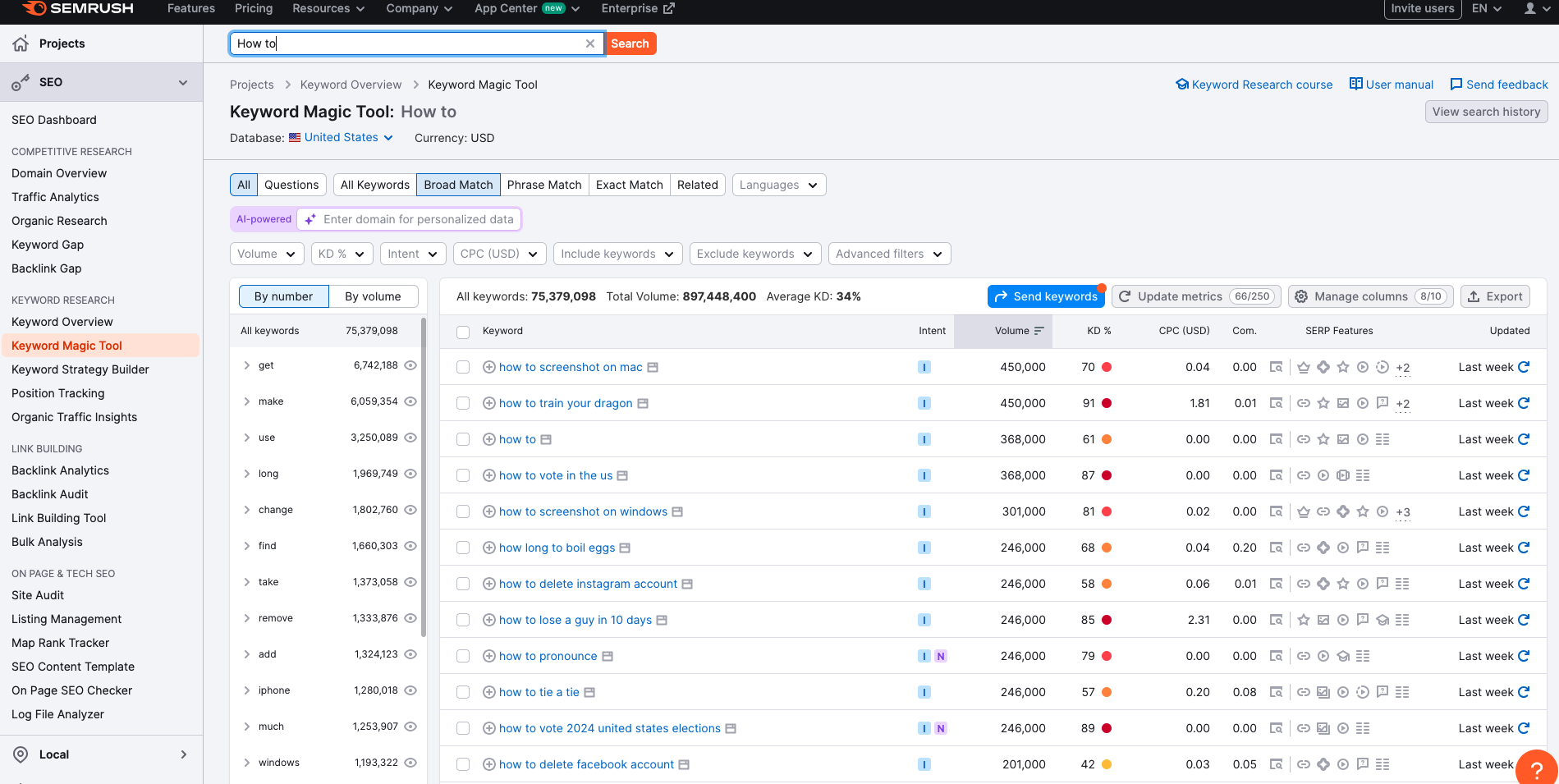
The above image shows a screenshot of SEMRush (a keyword research tool). Take a look at the "Volume" column on some of these "How to" search keywords.
If you rank at the top of Google for "How to Screenshot on a Mac", you going to get a large portion of that 450,000 searches per month coming to your site. Imagine how you can then divert those visitors to your sales page or even just run adverts on that page and earn a fortune.\
High-ranking SEO Content is the difference between a business that is going to make it big, vs one that could slip away and disappear.
Core components of SEO Content
You can break SEO Content Optimization down in to a few categories: Content Structure, LSI Keywords, E-E-A-T.
Content Structure
Content Structure is all about your "On Page SEO". Have you included the main keyword you want to rank for in the URL, the Title, the headings, the first paragraph etc. Do you have a well laid out and easy to follow page (i.e Do you have a good "Content readability")? Is your page broken down in to H1, H2, H3 tags etc.
LSI Keywords
LSI (or Latent Semantic Indexing) Keywords are words, phrases and entities that are semantically related to your main keyword.
If you were planning on writing a page or post about "How to change a tyre on a car", you would expect to have references to "Tire changing tools", "How tight should the lug nuts be", "How far can you drive on a spare tyre". You get the idea.
The more you can cover the LSI Keywords, the more Google (and other Search Engines) trust that you have good knowledge of the topic, and more importantly you are covering the topic fully for the reader. After all, if Google keeps sending people to pages that don't answer their question, those people will quickly find another search engine that sends them to page that do answer their question.
E-E-A-T
Experience-Expertise-Authorativeness-Trustworthiness, or in a more pithy way, E-E-A-T.
When you are trying to optimize content, you are also trying to show why people and machines (Search Engines) should trust what you are saying. It's all very well and good for me to write an article on how to cook the perfect roast chicken, but if I've never cooked a roast chicken (I have not), people probably shouldn't be taking my advice.
Goals of creating optimizes SEO Content
This one is easy. The ultimate goal is to be at the top of the search engine results page.
You need to at least be in page one of the SERPs (Search Engine Results Page) to be seen. Page 2 or lower and you'll be lucky to get any traffic.
The higher up the page you get in page one of the SERPs, the more likely you are to get more of the traffic for that search term.
The below table was taken from here
| Google Search Feature | Click-Through-Rate (CTR) | Clicks Received (Per 10K Clicks) |
|---|---|---|
| Ad Position 1 | 2.10% | 210 |
| Ad Position 2 | 1.40% | 140 |
| Ad Position 3 | 1.30% | 130 |
| Ad Position 4 | 1.20% | 120 |
| Search Position 1 | 39.80% | 3980 |
| Search Position 2 | 18.70% | 1870 |
| Search Position 3 | 10.20% | 1020 |
| Search Position 4 | 7.20% | 720 |
| Search Position 5 | 5.10% | 510 |
| Search Position 6 | 4.40% | 440 |
| Search Position 7 | 3.00% | 300 |
| Search Position 8 | 2.10% | 210 |
| Search Position 9 | 1.90% | 190 |
| Search Position 10 | 1.60% | 160 |
As you can see, as you start to slip down the rankings, the CTR (Click Through Rate) drops.
Essential Elements of Effective SEO Content
What are Keywords and what's their role in Content Optimization?
"Keywords" are effectively search terms. They range from one word up to as many words as you like.
"Best Laptops" is a keyword. "Best Laptops 2025" is another. "Best Windows Laptops under $1000 2025" is another.
As you can see, keywords can be broad or narrow in range.
Your choice of Keyword is crucial. If you are not a behemoth of a website who has a solid brand and a large amount of trust (Forbes, Reddit, Amazon), you are unlikely to be able to rank highly for "Best Laptops". If you are a medium sized site with some reputation and a good amount of authority in the domain, you may be able to rank for "Best Windows Laptops for Music Production". The latter of these two keywords, would be known as a "Long Tail keyword", which essentially means it's niche and has a lower competitiveness.
I will cover Keyword Difficulty and Domain Authority in a different post, but hopefully that explanation is enough for now.
Using Meta Tags Effectively
Before Meta was a company that owned VR Headsets and questionable social media sites, it was a term for a way of including HTML tags that told readers (crawlers) what the page was about.
You have a Meta Title and a Meta Description.
Your Meta Title and Meta Description are typically what is shown in the Google SERPs (Search Engine Results page):

As you can see in the above image, there are two predominant sections to each result in the SERPs:
Meta Title: Ann's Pasies - Cornish Pasties, Frozen or Cooked
Meta Description: Handmade, traditional Cornish Pasties, frozen or cooked, delivered to your door ready for you to enjoy the day they arrive or pop in the freezer to enjoy.
These two items would have been included in the page to which this SERP links and were added by the creator.
Use these wisely and have them include your main search keyword, and you stand a much better chance at the search engines recognizing what your page is about.
Optimizing Images for SEO
The clue is in the name: "SEO Optimized Content", not just text.
But how do you optimize images for SEO?
Well, for starters you need to add all appropriate data for screen readers and the differently abled. Make sure you have all of your "alt text" tags set correctly and make sure they accurately describe what is happening in that image.
It's also best practice in traditional on page SEO to make sure that at least one image on your page contains your primary keyword.
Strategies for Writing High-Ranking SEO Content
Search Engine Optimization and your SEO content strategy actually start well before you write your first piece of content.
You need to start with a good and clear keyword strategy.
Topical authority is key when it comes to pleasing the Search Engines, so ensuring that you don't write bunch of completely non-related posts is paramount.
Image that you write the following articles on your site:
- How to start a fire using just your socks
- What is the circumference of the Globe
- Do Koalas comb their hair?
What would Google make of that? Are you an specialist on jungle survival? An astronomer? A marsupial mastermind?
How could you claim to be an expert on any one of those things if you have no surrounding posts that show extra expertise ("Should Kangeroo's floss" for instance)?
Find your first topic, then cover that topic entirely.
Let me give you an example, and a very pertinent one at that.
This article I am writing is focusing on the "primary search term" of "Seo Optimized Content". My current SEO content strategy and keyword strategy is as follows:
I will be following this post up, with posts on:
-
search engine positioning improvement
-
optimizing for google
-
search engine optimization website design
-
do it yourself seo optimization
-
learn search engine optimization
These pages will all be interlinked and together show a solid understanding and good coverage of the topic on SEO Optmized Content. Ranking is not just about the current post you are writing or the web page on which you are working. Ranking is covering a topic so well and widely that it would be silly not to include you at the top of the Google Algorithm.
The use of LSI (Latent Semantic Indexing) keywords
Once you have a solid keyword strategy, you need to figure out how each of those keywords fans out in to their respective semantically related keywords.
For example, the primary keyword of this post is "SEO Optimized Content". What words or phrases should I include in this article to show that I'm covering the topic fully?
Luckily RankReady has me covered there.
One of our key SEO content tools here at SmoothSEO is our content opimization tool, RankReady.
I entered my main keyword, and RankReady reverse engineered the top results for that keyword in Google and then generated me a list of all of the keywords and how often I should use them:
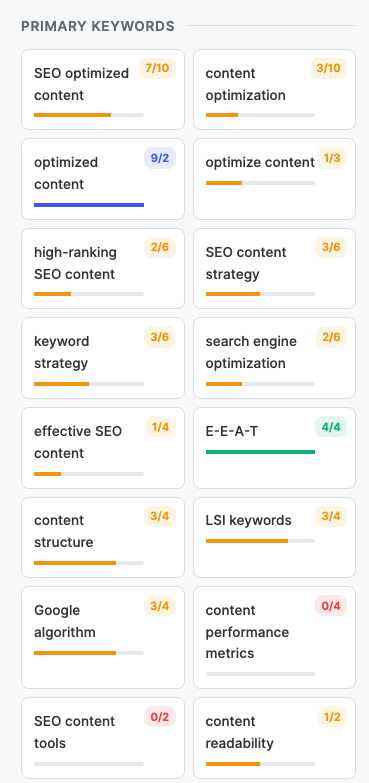
As you can see, for my main search term, there are a lot of LSI Keywords that I should be including: Keyword Strategy, Content Performance Metrics, SEO Content Tools etc. These are words, terms and entities that are so related to the "SEO Optimized Content" that it would be strange not to include them in an article that was supposedly covering the topic in detail.
Creating Compelling and Clickable Titles
Now i don't like Clickbait, who does, but that doesn't mean you can't create a title that draws attention and makes people want to click through (CTR) from the SERPs.
Let's look at two different spins on the same basic title:
"What is SEO Optimized Content" vs "SEO Optimized Content - Can you really afford not to be seen?"
Which one would you click on? You don't have to be "click baity" to draw attention.
Writing for User Engagement
Search Engines love to see people stay on your page. If people click through and then "bounce", it likely means that your page is not what people are looking for and you can expect a quick slide down the rankings table.
If viewers are engaged and read on, it sends a great signal to the search engines that they've done a good job in sending you to a webpage that solves the problem. Expect a gold ribbon in the post. You've won this search term.
Did you match the users intent?
In traditional SEO tools, user intent falls in to a few categories:
- Informational
- Commercial
- Navigational
- Transactional
A deep dive in to these is a topic for another day, but answer me this. If you were searching for "how to tie a tie" and then the first page didn't tell you how to tie a tie, but instead tried to sell you a tie, would you finish your search after finding that page? No. Definitely not.
To summarize: You need to make sure that your post is matching the intent that the user had when they searched.
Effective Calls to Action
If you've got people visiting your site, you have great content, you are matching the users intent, you need to use that good will by incorporating CTA's (Call To Action).
An example of this would be:
Sign up to use RankReady today to easily create high-ranking SEO Content!
Improving Content Visibility Through Optimization Techniques
Content Optimization takes many forms. We've covered a lot of the more basic and intermediate forms of content optimization, but we're not done yet.
Enhancing Readability and User Experience
Whatever content you create content for Search Engine optimization, you need to cover all bases.
Can your content be read by screen readers? Can it be read by the visually impaired? Is it content that is accessible to people with colour blindness or colour impaired?
Readability and user experience also include simple readability things such as including lists, images, Table of Contents, visual breaks, videos etc. No one wants to just view a wall of text.
This is no fun to read at all:
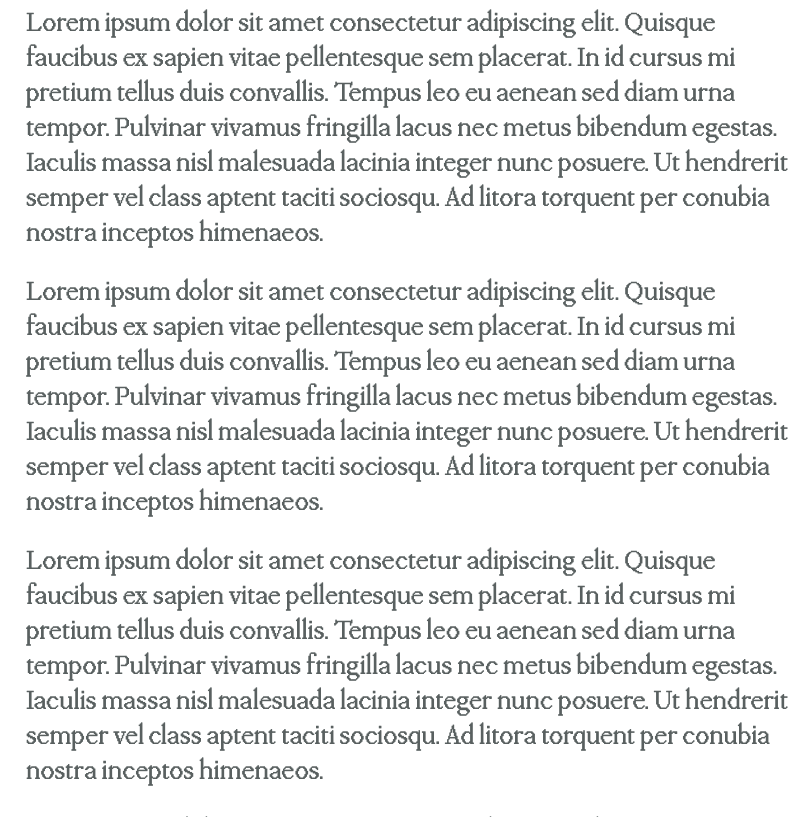
Mobile Optimization Considerations
The exact balance between where more volume comes from, Desktop or Mobile is actually quite nuanced (check out this Semrush posts on Mobile vs Desktop volume), but as you can imagine, mobile volume is huge. If your site is not optimized for Mobile and Desktop, you will have your rankings affected (isn't search engine optimization fun!).
These days, most CMS will default out of the box have themes that are mobile responsive, so unless you are rolling your own site (such as the one on which you are reading this), you shouldn't have to worry too much.
Mobile optimization isn't just about sizing and layout though, the performance is also key. Mobile / Cell phone speeds can vary and you can be in good or bad reception. You need to ensure that you site is fast enough and optimized enough (image size etc.) that you load quickly on mobile devices.
Shema Markup
What is Schema Markup?
Schema Markup is a set of specific tags on a page that tell web crawlers (search engines) information about your page.
Markup can be there to give a consistent way to convey the author of a blog post, the FAQ section, the Breadcrumbs. Prior to a standardization of this markup, every site would do this in there own way. Now, there is a consistent and industry standard way to include in your web page all of these topics and more.
Here is an example of some schema markup that contains information about what's to be found on the page, as well as the author and relevant links for that author:
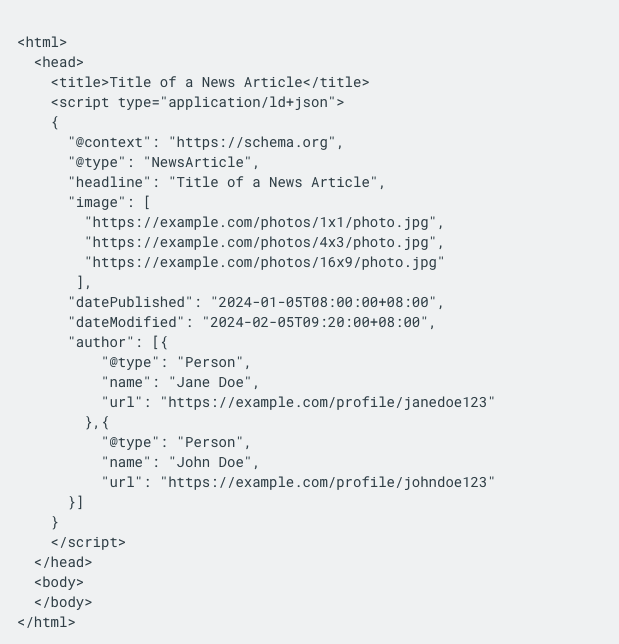
Keep your content fresh
Best Restaurants in London - If you were to search for this, would you be happy to see a result from 2011 that was last updated in 2014? Probably not. Knowing commercial rent prices in London, chances are 80% of the recommendations on this page would have been out of business for a few years.
If you want to stay at the top of the SERPs, make sure you content is up to date and regularly refreshed. Do not just add some whitespace, publish and call that an update. Make relevant and substantial changes when needed.
High-ranking SEO content is up to date and useful. Optimize content accordingly.
Optimizing for Search Algorithms and Updates
Google changes - so should you
In todays fast paced world, things change and fast.
Google pushes out periodic "core updates" that change the way it ranks content.
You need to follow these trends and update your content accordingly.
One thing that remains consistent: build a good brand, post original and informative content and your site will rank.
E-E-A-T and Content Ranking
This site is all about SEO and Brand Awareness. If I were to publish a post on how to french perm a bulldog, I doubt people would take it seriously.
You need to build your entire sites expertise, experience, authority and trustworthiness before anything will rank.
I will do a future post on E-E-A-T and exactly how to implement this site wide and in each post, but for now you have to understand that you need both the user and the algorithm to trust that you know what you are talking about.
Backlinks and their role in SEO Content
It's one thing having great content, but you also need proof that this content is seen as great by others.
Enter, the backlink.
A backlink is a link from one site, to your site. If people think your content is good, they will likely want to use it as a reference from their site.
Within this article alone, I've linked out to several external sites who offer detailed explanations of items I think the reader would find useful. These are me giving backlinks to those sites.
Google will crawl this page and see that I've linked to those pages and this gives those pages extra credibility that those pages are useful and informative. If 100 sites all link back to this page, that shows great trust that this page must be useful.
Do not under estimate the importance of building these backlinks.
Featured Snippet Optimization
Optimizing your page to be featured in Googles "Featured Snippets" will greatly increase CTR as you will have far more eyeballs on your content.
You should do this by having clear sections in your text that directly answer a question in a concise and informative manner (this also helps with your content readability, so it's a 2-for-1).
Again, effective SEO content is hard to do, but the better you get at it, the more eyes on your site you will have.
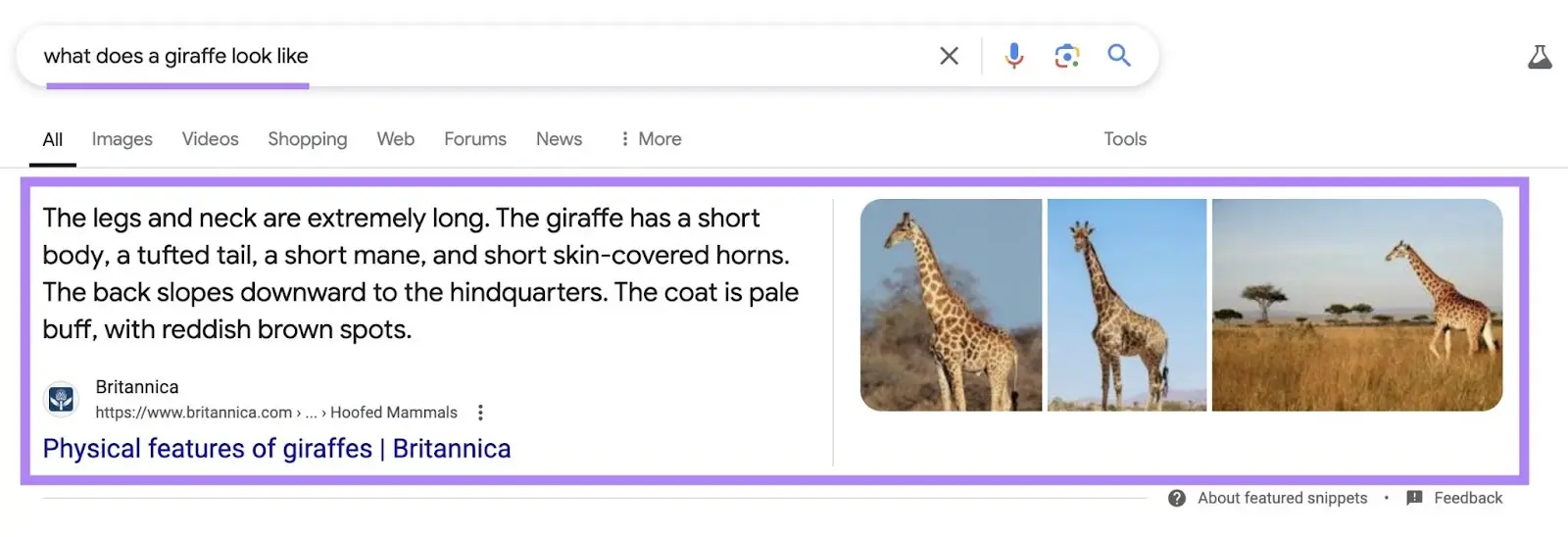
Tools and Metrics to Enhance SEO Content Performance
KPI's for evaluating content
The position in search results. This is really the only KPI. Is your page ranked high, for what keywords.
Anything other than this is just a vanity metric.
Of course, there are bigger things at play here as well: Keyword Difficulty and Domain Authority, but we'll get to those.
What is the role of content optimization tools?
The ultimate role is to give you the best start and the greatest chance to succeed in ranking your content.
If you start of with a good SEO content strategy, the next thing is to use content optimization tools to fulfill that strategy and write great content that helps the reader and also pleases the search engines.
Tools like RankReady try to give all of the data available as to how to rank your content as high as it can go.
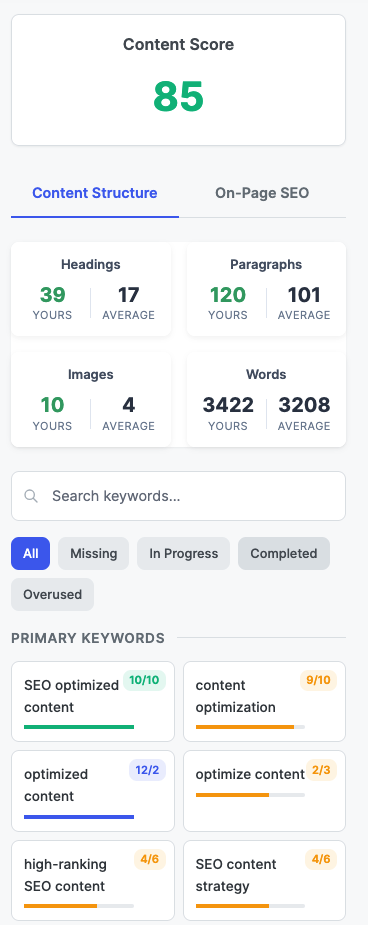
RankReady will tell you the average headings that are included in the top results for your given search term. It tells you how many paragprahs on average you should include, how many words and images, as well as the keywords and LSI keywords you should include:
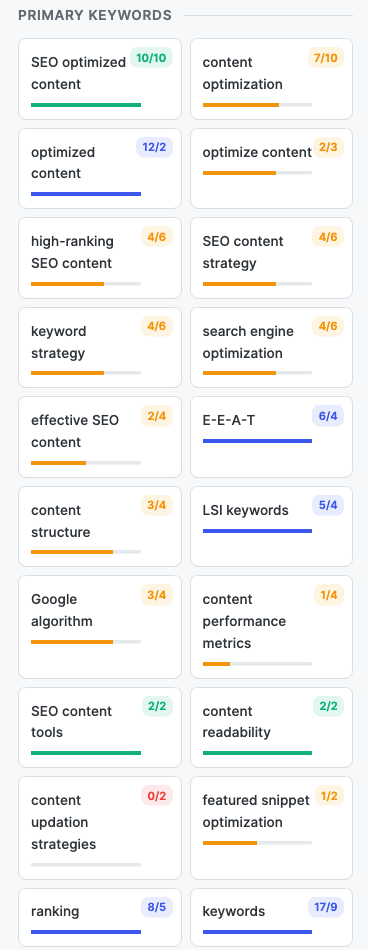
The guess work has been removed by using RankReady as it shows you up to date results on what actually ranks and what actually works. You don't have to guess, we reverse engineered it for you.
You can see effective SEO content in action, by using the sites that are currently pleasing the Google algorithm and are being ranked at the top. This is a search engine optimization cheat code.
Content Performance Metrics
How can you measure exactly how well you are doing with your content optimization?
Google Search Console is the first and best place to check.
Get your site registered in GSC and that will show you exactly what search terms you are ranking for, and what you aren't. This is the ultimate guide to how well you are doing in content optimization.
Case Studies and Practical Examples of Successful SEO Content
Let's look at an example of when SEO Content Optimization is done well:
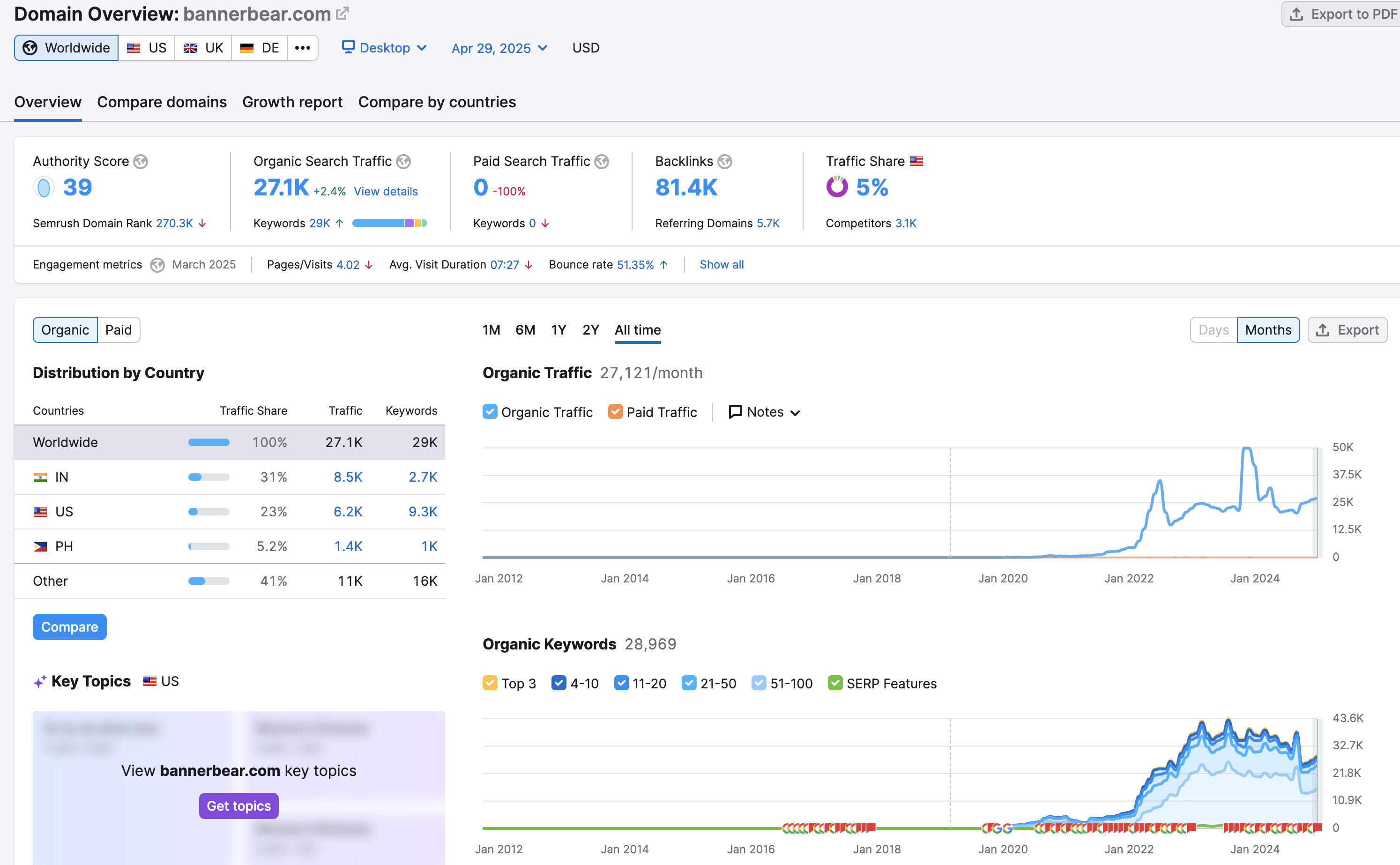
You can see in the above image, as the organic keywords grows, so does the traffic.
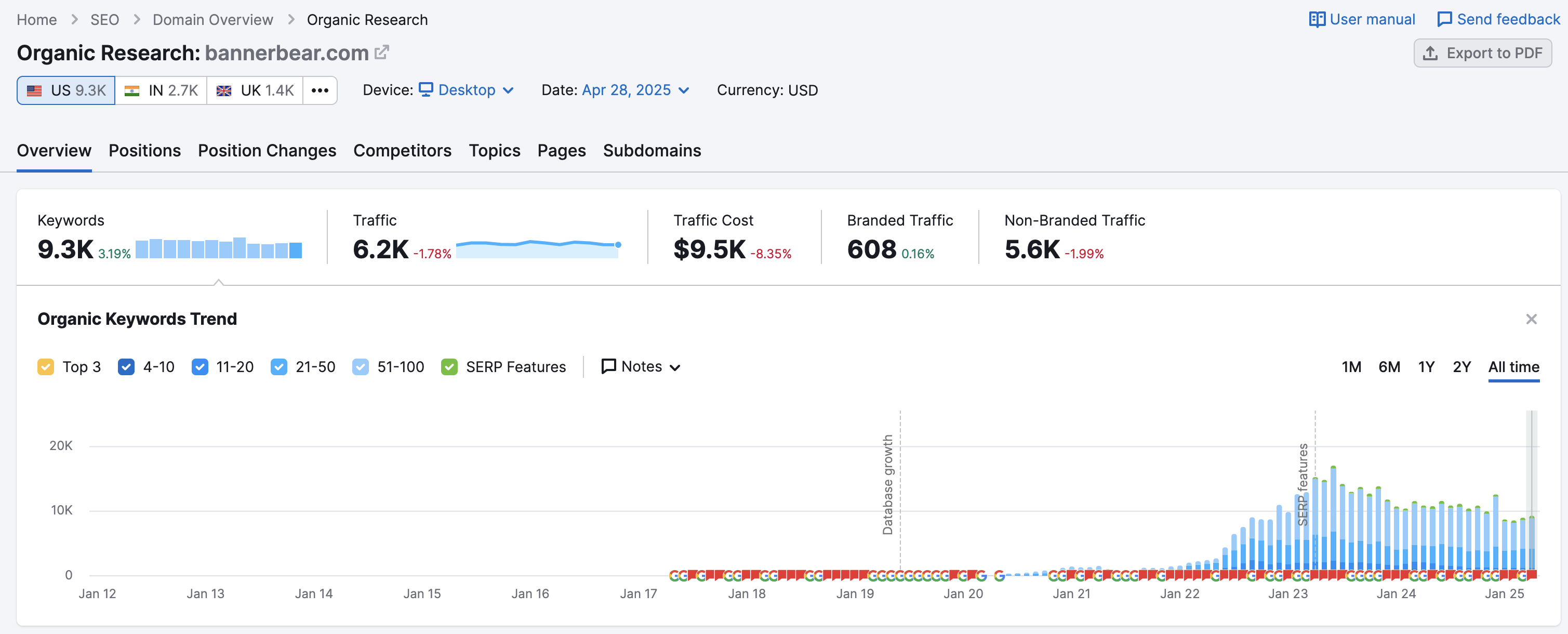
BannerBear starterd a pretty aggressive SEO content strategy around January 2020. Per the image above, their ranking organic keywords steadily rose from almost 0 in Jan 2020 to 1500 keywords in January 2022.
As the organic keywords that BannerBear start to rank for grow, so does their traffic.
Take a look at the below picture. BannerBear have one page that drives 3,000 visitors per month. I'll repeat that: That's just one high-ranking SEO content page, driving 3,000 visits per month.
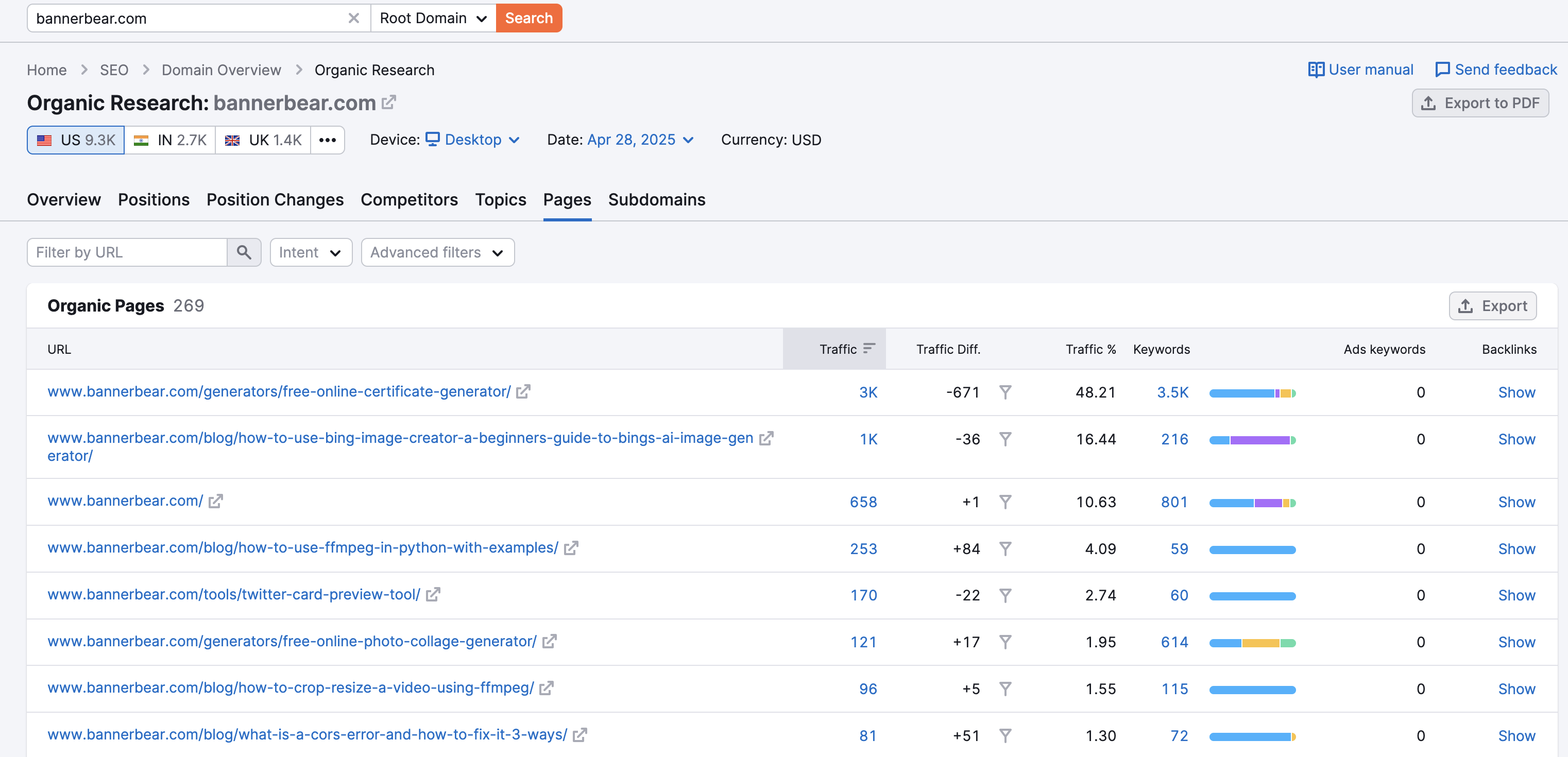
If we drill down in to that top performing page, we can see the true monetary value of that traffic:
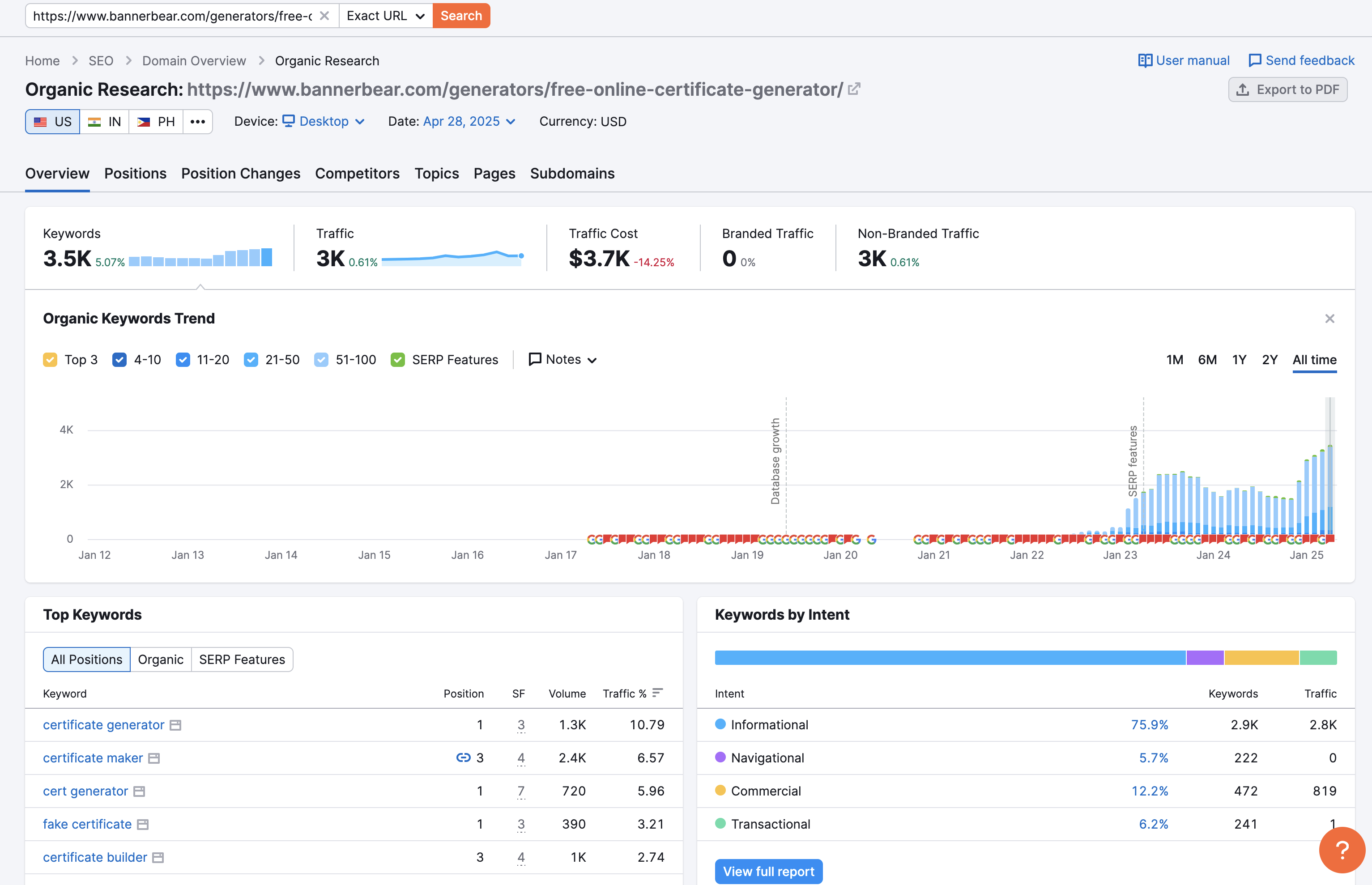
This is US traffic (i.e. high converting, good money clients) are work $3,700 alone. This is just one page.
Lessons learned from Successful Campaigns
High-ranking SEO content follows the standard KISS rules - Keep It Simple Stupid:
- Good keyword strategy
- Understand effective SEO content - On page optimization, meta data, keyword placement
- Content Performance Metrics - Track what works and do more of it. Track what doesn't work, and do less of that.
Creating a Consistent SEO Content Strategy
Google and other search engines have "crawl budgets". This basically means that they assign you an amount of processing power that they use to read and re-read your website to look for more content.
The more you publish, the more they will read and quickly rank your site.
Having a good, clear planning and publishing cycle for your content is key.
As long as you can keep the quality up, you should be publishing as much as possible, as often as possible.
Make sure you keep your content relevant to your niche, well internally linked and well silo'd, and you'll be fine.
SEO should be just a part of your overall marketing goals. One of many.
SEO is for the long term, work while you sleep traffic, where as Social Media posts may drive quick traffic in short bursts and Ads get you traffic when you pay for it. All of these marketing tactics have a place.
Scaling Content Production
I do not recommend using AI (or at least entirely AI content) in your posts or websites. I've seen it used to quickly put out lots of low to medium quality generic content that quickly ranks and just as quickly fades in to obscurity.
AI has it's uses, but personality, experience and the human touch will always win out in the long term.
So to scale content, you need to be able to continue with the quality that your readers know and love.
Conclusion: Enhancing Your Website's Performance with Optimized Content
What are the key takeaways for writing SEO Optimized Content?
Start with the keyword strategy. You should not write a single word without understanding your SEO content strategy.
Plan, plan, plan then execute.
An Ounce of preparation is worth a pound of post
SEO is a continually evolving practice. It hasn't stayed the same for the last 25 years. There's no reason to believe that it will stay the same moving forwards. Keep up to date with trends and tactics and update your plan accordingly. Stay nimble.
Final Thoughts
SEO is a long game.
It's not a quick and easy win.
You can not get ahead overnight.
But if you play it well, put the effort in and put in to play the tactics I've written today, you will reap rewards that no other marketing tactic can match.